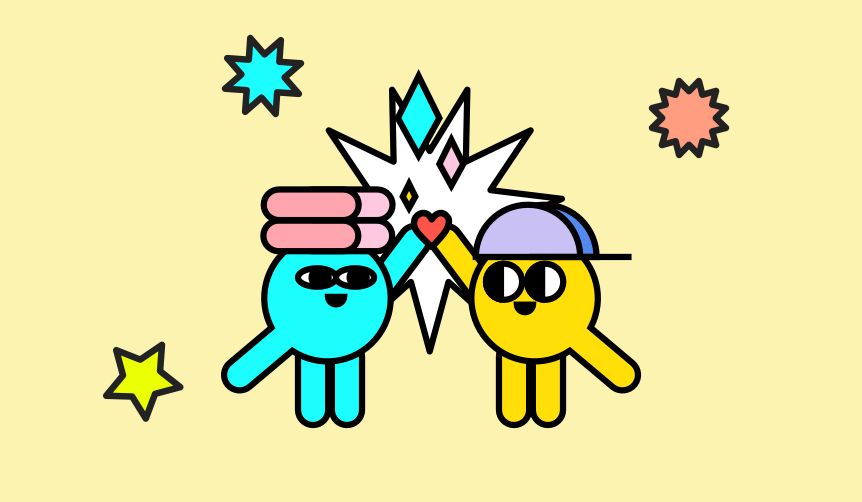How to use Slack and Trello to show gratitude at work
When you double in size as a team or company, sometimes you outgrow the tools and practices you use. At Glitch, gratitude is a company value that extends all the way back to our days as Fog Creek Software. For years, we’ve iterated on this general premise that taking time to recognize colleagues, peers, and collaborators creates a better workplace for everyone.
When our CEO Anil Dash wrote about this two years ago, the company was half the size it is now and still called Fog Creek Software. Every week during Town Hall, employees would publicly thank one another for help with a technical challenge or major contributions to large projects. It might seem corny, but it became a habit!
We’re not alone in seeing the importance of gratitude when building a team. “Workplace recognition motivates, provides a sense of accomplishment and makes employees feel valued for their work,” a Gallup analysis reads. “Recognition not only boosts individual employee engagement, but it also has been found to increase productivity and loyalty to the company, leading to higher retention.”
Bravos in Trello #
What started as an informal Town Hall practice eventually grew to be time consuming and tedious as we added employees. Going around and giving “Bravos” or public acknowledgements became the bulk of the meeting.
We experimented with using Trello to solve for both time and distribution. During the summer, we divided all employees into four groups alphabetically on a Trello board. Throughout the week, employees were encouraged to add Bravos to individuals’ Trello cards and then we’d read the Bravos out loud during each Monday All Hands meeting.
Someone would kick off the initial card and then whoever received the Bravos would read the next set of Bravos for the person listed below them. The process took no longer than 15 minutes, but even then, it led to some unforeseen challenges and feelings.
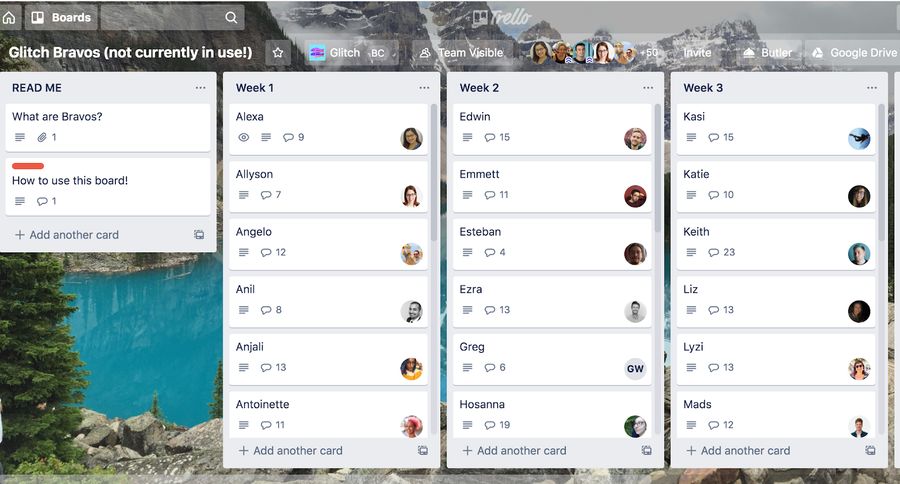
No one wants compliments out of social obligation, but that’s exactly what was happening. When you see everyone’s name in a column on Trello, it’s hard not to feel bad if someone didn’t get a Bravo — so it never happened, everyone always got multiple so no one felt left out. It came across as disingenuous to receive a broad compliment about your work.
Sarah Zinger, an Engineer on the Community team, was on the opposite side. “I felt some pressure to make sure everyone got good Bravos. I thought, ‘this person is awesome and needs more and better bravos’ but I hadn’t necessarily worked closely with that person for a few weeks and might not have something specific or meaningful to say.’
It also ended up creating a weird relationship between manager and employee. “Giving visibility to your team's work is an important part of managing, but Bravos weren't a good vehicle for that,” Victoria Kirst, Director of Platform said. “What people remembered were the petty social aspects: who bravoed whom, who got the most praise, how effusive was the praise, and so on. I didn't want my reports to get caught up in that -- I didn't want them to be worried if I didn't give them a bravo or if I didn't write something long enough for them -- so I didn't participate.”
Bravos in Slack Using Reactji #
In our current iteration of Bravos, we try to keep it simple, mostly using Slack and the Reacji Channeler tool. Reacji automatically forwards a message to a Slack channel if someone reacts to it with a specific emoji.
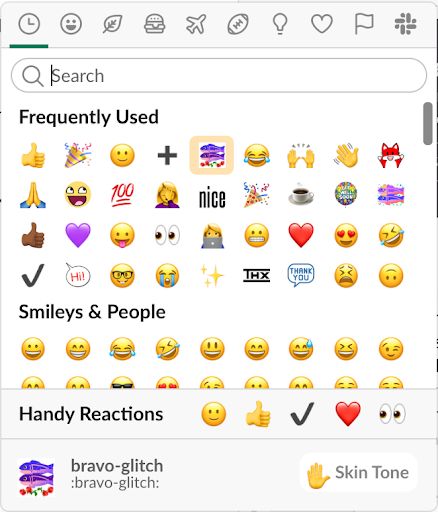
At Glitch, we have the “Bravo” emoji (Glitch fish with flowers) that pushes message to our #bravos channel. Each week, Jess, our Executive Ops Manager, aggregates the channel’s messages from the week and posts them in our All-Hands Trello board. This gives everyone a chance to see what was recognized throughout the week without all of the fanfare.
If there’s something that particularly stands out, we’ll make it a point to summarize the effort during the meeting, usually by a member of the executive team.
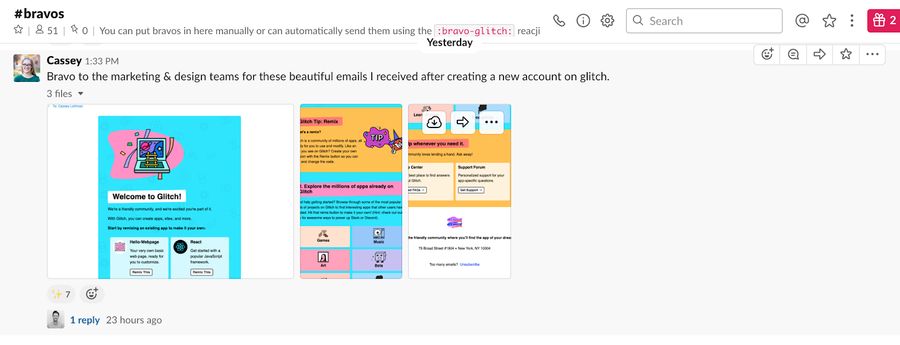
Employees can write Bravos directly in the #bravos channel (above) or simply use our custom emoji to send a message into the channel (below).
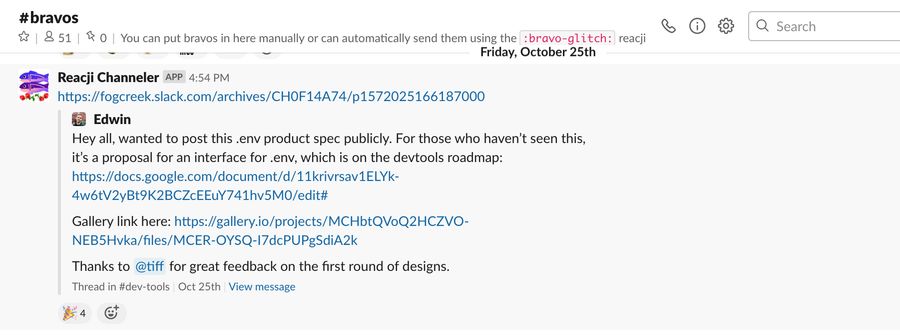
It’s been a few weeks since we’ve tried this new system out and so far so good! The recognition is light-weight and part of the teams’ distributed workflow. There’s no more social pressure and the optics around giving and receiving a Bravo are minimal compared to what they were in the past.
Will this system break as we scale to hundreds of Glitchers around the world? Who knows, but it’s safe to predict that no matter how we big we get, our gratitude will grow too.
Are you interested in helping Glitch evolve its culture? [We're hiring](https://Team recognition becomes trickier as startups scale. Here’s how Glitch addresses the challenge.)!
